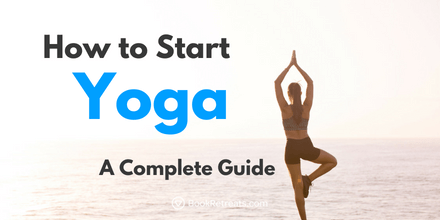Profound mental and physical benefits can help you live a better life
We all know a friend or family member who swears by yoga. We see the studios, the attire, and the classes advertised all around us – maybe even at our workplace or our child’s school.
More than 36 million Americans practice yoga, and that number grew by 50 percent between 2012 and 2016, according to thegoodbody.com.
And as yoga’s popularity surges and the benefits continue to be touted, many more want to join in the fun – especially since yoga helps us relax in a stressful world, relieves irksome pain, and just generally helps us feel better.
But what type of yoga will work for you? What do you need to know before you start? And what other kinds of benefits can you expect?
Yoga is more than physical
Yoga is a style of mindful exercise that goes beyond physical postures you may have heard about (downward-facing dog, child’s pose, warrior one, etc.) by using breath and methodical movement to guide you to a deeper awareness of your body, mind, and experience of the present moment.
When we practice yoga, we are tapping into our innate ability to positively impact our own physical, mental, and emotional well-being. Yoga helps us heal all aspects of ourselves.
Yoga is gentle
Don’t be intimidated by all the poses and all the names. New students can ease into a class with confidence if they seek out gentle yoga or all-levels yoga classes. In gentle yoga, the stretches should be enjoyable, simple, and easy to follow.
In an all-levels class, the instructor will cater the class to the experience level of the students, often offering multiple stages for each pose. Concerned about knee or hip discomfort? Look for a chair yoga class.
Yoga is simple and structured
A typical yoga class is an hour long and consists of stretching exercises performed on a yoga mat while sitting, standing, or somewhere in between, such as on your hands and knees or hands and feet. Prepare for stretches to warm up, exercises to flow with plenty of breathing cues, and time to relax at the end.
You can bring your own mat or borrow one from the studio. Wear loose, flexible, and comfortable clothing. Don’t worry about any special footwear—yoga is generally practiced with bare feet.
Yoga is good for your heart – and so many other things
It’s as simple as this: Yoga is really, really good for you. Research shows that yoga decreases inflammation, reduces chronic pain, and improves cardiovascular health by gradually lowering risk factors such as blood pressure and pulse rate.
Yoga students often tell me that their back pain has diminished or that they feel more flexible in their shoulders. And yoga also improves your breathing, lung function, and balance.
Yoga is deep
We all know yoga has physical benefits. But the sense of inner peace that yoga cultivates attracts many practitioners. Yoga is not a religious practice, but instructors will often incorporate uplifting and uniting ideas or phrases throughout class.
For example, teachers and students exchange the phrase “Namaste” at the end of a class. The most basic interpretation of “Namaste” is “I bow to you.”
But this intention is often expanded to convey: “The light within me recognizes the light within you, and when we bow to our true nature, we are at one.”
Yoga classes nurture and grow this sense of harmony that helps you in all walks of life. Research shows that yoga practitioners fall asleep faster, sleep longer, and wake up feeling better rested. Yoga helps decrease cortisol levels in your body, which relieves stress and even symptoms of depression.
Sounds soothing, doesn’t it? By combining the movement of the body with the flow of breath, yoga allows the mind to become present and the self to find its center.
Yoga is all of these things and more
- Check in with yourself: As a beginner, check in with your mind and body during and after each class to gauge how regular yoga practice is making you feel. Taking a class once or twice a week is usually good for maintaining flexibility, strengthening your body, and easing your mind.
- Consistency – and fun — is key. The benefits of yoga come from a continued practice over time, so a great way to stay consistent with your practice is by choosing a class you enjoy and a pace that is sustainable. Inviting a friend to come along or meeting other regular yoga students builds camaraderie and helps you look forward to each session.
- Don’t give up. Remember to breathe during yoga and resist the urge to push past the body’s level of comfort in a pose. Take it slow and simply enjoy the experience! Remember: You ARE flexible enough, coordinated enough, or in good enough shape. Whether it’s chair yoga, gentle yoga, or even an advanced practice, there is a yoga class for EVERYONE.
If you focus on self-acceptance and find an instructor who is happy to meet you at your current level of comfort, then there is no reason yoga can’t be exciting, beneficial, and relaxing. As always, be sure to talk to your doctor before embarking on a new exercise plan. Namaste!




